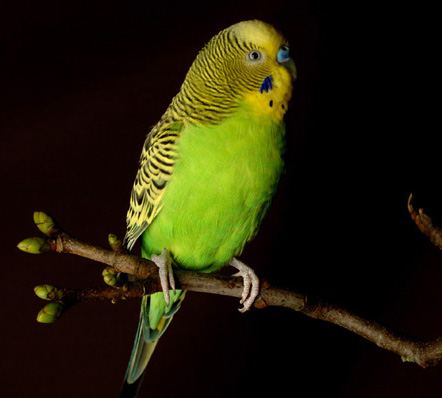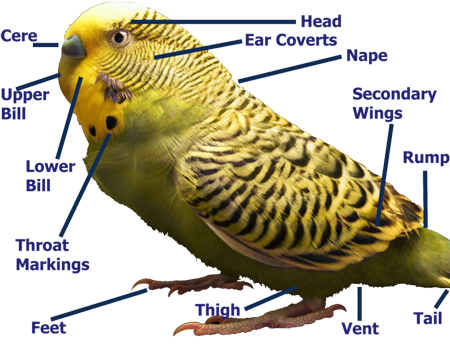Budgie Information
The budgie (also known as Budgerigar, Melopsittacus undulatus, parakeet, shell parakeet or budgerigah) is actually part of a tribe of parrots referred to as “Broad-tailed Parrots”. Although budgies are often called Parakeets, the term “parakeets” actually refers to any of a number of small parrots with long flat tails. Budgies are social animals and enjoy the company of other budgies and humans; they are also very intelligent animals so they enjoy toys to play with and things like wood to chew on.

Habitat: Budgies are usually found in a wide range of areas in the dryer interior of Australia, but they can also be found in the semi arid and sub humid parts. There are some seasonal movements for budgies though, where they can head northward during the winter. If you are in the right climate and right area, Budgies can be found in spinifex, dry mallee and mulga scrub, riverine woodland and farmland. The budgie’s population in the wild is estimated at around 5,000,000.
Budgie biology: A Budgie’s life expectancy is quite varied; on average it seems to be around 4-9 years, however some can live up to 15 years, and some have quite short lives.
Sex can be determined by the colour of the budgie’s cere. Males usually have a light to dark blue cere, they are generally easier to train than female budgies. The females can be recognized by their beige/whiteish ceres which usually turn a brown (sometimes crusty) colour when in breeding condition, they can be harder to train than males because they are typically more dominant and stubborn, they are also more vocal than male budgies.
Breeding season can take place at any time of the year, with couples capable of having multiple clutches (each clutch containing 4-8 eggs).
Size on average is 18-20cm, weighing around 20-40g. Interestingly, budgies that are bred in captivity are usually slightly larger than those born in the wild.

Anatomy of a Male Budgie
Other interesting information: Budgerigars have been known to see in the ultra-violet spectrum and their plumage is known to fluoresce under ultraviolet light suggesting that the florescence of their feathers is related to courtship and mate selection.
With the domestication of the budgie there have spawned at least 32 different primary colour mutations, this allows for hundreds of possible secondary mutations and colour varieties.
Additional information can be found on our specific pages around the site.









